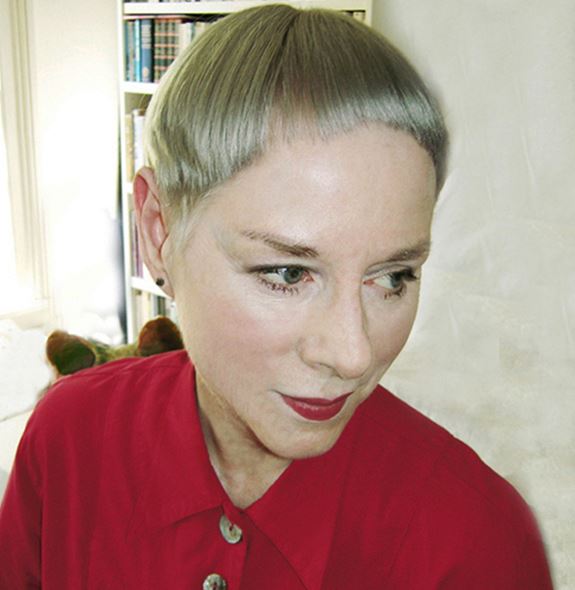
The Human Animal Connection
Thursday, March 11
USA: 10am PT, 11am MT, 12pm CT, 1pm ET
EUROPE: Scotland/Ireland/England:18:00 GMT, Belgium/Germany/Spain: 19:00 UTC
In this Zoom Dialogue we consider the human animal connection through presentations by ecoartspace members Rachel Frank who will present her Rewilding performances in site-specific landscapes and in videos, Jan Harrison who will discuss her ongoing series including paintings and sculpture titled Animals in the Anthropocene, Lenore Malen who will present her Post Humanist projects including Eve in Sheepland, and Christopher Reiger who will discuss the concept of supernatural animal spirits or guides in relation to his paintings of nonhuman creatures.
Each presenter will have 10-15 minutes and following Q&A will be led by our member respondent Ron Broglio.
Member respondent:

Ron Broglio is a senior sustainability scholar at the Global Institute for Sustainability at Arizona State University where he is also the Director of Desert Humanities, and co-director of the Institute for Humanities Research. His research focuses on how philosophy, art, and literature can help us rethink our relationship to the environment. The goal is to explore nonhuman comportment and thought through physical and representational engagement with animals and the landscape. Broglio is best known for his research and writing on nonhuman phenomenology and animal revolution. ronbroglio.com
Member Presenters:
Rachel Frank combines sculpture, video, and performance to explore our relationships and shifting perspectives towards natural history, climate change, and non-human species. Using fabric, clay, and other materials, she makes large-scale masks and other sculptural objects, which exist both as stand-alone works and as materials engaged in broader narratives. Frank often focuses on a particular species as a proxy or synecdoche for examining larger ecosystems and broader ecological concerns. She uses these works to interact with site-specific landscapes either with “Rewilding” performances that seek to engage with the landscapes’ memory and restore past ecosystems, or through ecologically driven sculptural videos. Frank is an artist and wildlife rehabilitator based in NYC. Solo and two-person exhibitions include MOCA Tucson (AZ), the SPRING/BREAK Art Show (NYC), Standard Space (CT), and Geary Contemporary (NYC). She has staged performances at HERE, Socrates Sculpture Park, and The Watermill Center in collaboration with Robert Wilson. rachelfrank.com

Jan Harrison has explored since her earliest work the animal nature and the human psyche. Mysterious and intimate characters act within an inner landscape, similar to dreams. In 1979, after a dream, she began speaking in Animal Tongues, which led to her paintings and sculptural installations. In the series Animals in the Anthropocene, wild, feral, and domesticated animals look at us. Their eyes invite us into their world. They call to us and to each other. Many struggle in a world that has been changed by humans. Many face extinction. They want to live. There are great struggles and unknown outcomes. Exhibitions include Animal. Anima. Animus, Finland, Holland, Canada, MoMA PS1. She is the Inaugural Recipient of the Recharge Foundation Fellowship for New Surrealist Art, NYFA. Her exhibition, ANIMULA - big little soul, 2020, was reviewed in Hyperallergic, Jan Harrison's Dream Animals, Carter Ratcliff. janharrison.net

Lenore Malen makes films focused on utopian myths, beekeeping and sheep herding. They point to the long history of humanity’s destruction of our planetary ecosystems. She has raised honeybees and has made a documentary about the beekeepers who became her friends. Following she made a 3-channel film installation titled I Am The Animal, where interviews with beekeepers were intercut with historical and found footage, examining the industrialized treatment of bees and the ways we have anthropomorphized them. More recently her film titled Eve in Sheepland, set on a sheep farm, retells the Genesis myth through a darkly humorous lens. Malen is a NY-based interdisciplinary artist. She recently exhibited and performed at Wave Hill; Tuft’s University, Uppsala Konstmuseum, Sweden; Studio 10, NY; Art Omi, Ghent, NY. She has lectured at the U of Geneva’s conference titled Approaching Post Humanism and the Post human, and at Pace University conference titled Welcome to the Anthropocene. Malen received a Guggenheim + NYFA Grants in 2015. lenoremalen.com

Christopher Reiger intends for his work to be visually seductive, yet confrontational. He hopes that viewers are drawn to the pictures and that they want to meet the gaze of each represented animal, yet find sustained engagement slightly uncomfortable. His wraithlike creatures look back. They stare, offering an opportunity to accept their gaze and to wrestle with the very idea of doing so. What does it mean to look – to really look – into another creature’s eyes? Is it an empathetic exchange? Or a hostile, defensive one? His series Familiar references the concept of supernatural animal spirits or guides. Reiger is an artist, writer, and photographer fascinated by natural history, conservation, & ecology. His art and writing projects wrestle with contemporary constructions of nature, and the human relationship to nonhuman animal species. He's Virginia rooted, NYC steeped, and transplanted in Northern California, where he's working to spread roots. christopherreiger.art
Images (top): ©Rachel Frank, Thresholds, 2019; ©Jan Harrison, THE FLOOD, 2018, pastel, ink, charcoal on rag paper, 22.5 x 30.25 inches, Series: Animals in the Anthropocene (detail); ©Lenore Malen, Eve in Sheepland; ©Christopher Reiger, Familiar: Great Horned Owl, 2019.